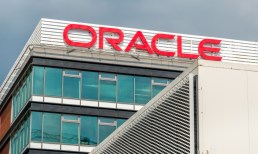Stablecoin Issuer Tether to Retain ‘Strong Focus’ on Markets Outside US

Stablecoin issuer Tether reportedly plans to continue to focus on markets outside the U.S. even as it works to become compliant with potential U.S. regulation of the digital tokens.
“We are looking at the GENIUS Act in a way that will allow us to become compliant,” Tether CEO Paolo Ardoino told Bloomberg TV on Friday (May 23), referring to the bill that made its way through the U.S. Senate and is now awaiting a similar bill in the House. “We can be compliant while still having a strong focus on foreign markets.”
Tether, which is based in El Salvador, accounts for over 60% of the global stablecoin market but does not service U.S. customers, according to the report.
The Senate and House bills require stablecoins to be fully backed by cash and “safe assets” like short-term Treasuries, make issuers subject to the Bank Secrecy Act and anti-money laundering (AML) regulations, and allow regulators to sign off on foreign issuers that are subject to “comparable” rules overseas, the report said.
Most of Tether’s reserve is made up of assets that would be compliant, but some of it is comprised of non-compliant ones like bitcoin and secured loans, per the report.
In addition, Tether currently releases quarterly attestations signed off by BDO Italia SpA rather than an audit of its reserves by a big four accounting firm, according to the report.
Ardoino told Bloomberg TV that “a full audit is our priority.”
While Tether aims to become compliant with the U.S. bills, Ardoino said: “Our customer base are the 30 billion people unbanked that are not touching the banking system.”
Ardoino announced May 5 that Tether is set to launch an artificial intelligence platform that will allow users to make payments with bitcoin and the company’s own USDT stablecoin.
On May 2, Ardoino told CNBC that Tether plans to launch a new dollar-pegged stablecoin in the U.S., with the timing depending on the timeline of the GENIUS Act.
Tether released its most recent independently audited financial figures and reserves report on May 1, showing that as of March 31, it had top-line figures of $149.28 billion in total assets against $143.68 in liabilities for fiat-backed stablecoin holdings.



